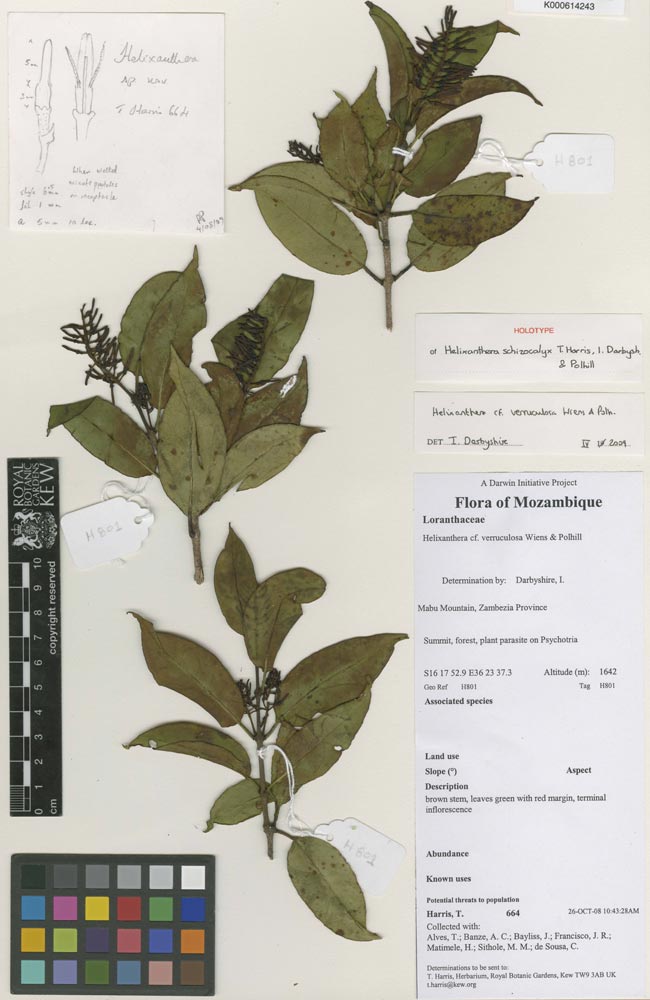More Reason for Christmas Kisses: New Mistletoe Found

This Christmas, a new tropical cousin joins a traditional evergreen decoration. British researchers announced that they have identified a new species of mistletoe, a partially parasitic plant that grows on stunted trees in the coffee family near the summit of Mount Mabu in northern Mozambique.
"This is truly a completely new discovery," said Bill Baker, senior research botanist at the Royal Botanic Gardens, Kew, in the United Kingdom.
This tropical mistletoe, dubbed Helixanthera schizocalyx, is a relative of the European and North American varieties, sprigs of which are hung over doorways around Christmas with the expectation that couples passing beneath them will kiss, a tradition that may have pagan roots.
Tropical mistletoes, like this one, can have bright, tubular flowers that are often red, according to Baker. Five specimens of this species have been collected so far, however, flowers have not yet been observed to open in the field.
"Quite often the buds are slightly greenish, and then they color up when they are open. I suspect they will come out yellow," Baker said.
The berries have not yet been observed either, according to Baker.
Most mistletoe are partially parasitic plants, meaning that it in addition to sucking nutrients from a tree, mistletoe has green leaves that use photosynthesis to produce its own energy. Tropical mistletoes collaborate with birds and insects that pollinate them while feeding on the nectar of the flowers. This new species is believed to be pollinated by insects, and it was spotted by a butterfly specialist, Colin Congdon, according to Kew's species description.
Sign up for the Live Science daily newsletter now
Get the world’s most fascinating discoveries delivered straight to your inbox.
And while the plant was collected during an expedition in 2008, it wasn't until this year that scientists identified and determined it to be vulnerable to extinction. This is common for newly discovered species, Baker said.
"They very often tend to have narrow ranges and are under threat and this is why whenever we talk about new species, we tend to talk about things disappearing before we have even named them and found out what their properties are," Baker told LiveScience.
Although it has only been identified on this particular mountain, the researchers speculate that it may also live on nearby mountains.
The new mistletoe topped the list of the year's top botanical discoveries at the Royal Botanical Gardens at Kew. Other finds included a Vietnamese orchid with glossy, white-and-bright-orange flowers; four individuals of a new species of 135-foot (41-meter) tall canopy tree in Cameroon; 14 species of new Madagascar palms; and a wild, medicinal aubergine (also called an eggplant) in East Africa.
- Top 10 Species You Can Kiss Goodbye
- Five Surprising Holiday Health Myths
- Top 10 Poisonous Plants
You can follow LiveScience writer Wynne Parry on Twitter @Wynne_Parry.
Why is yawning contagious?
Scientific consensus shows race is a human invention, not biological reality











